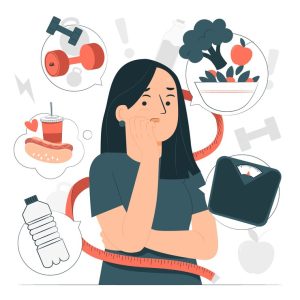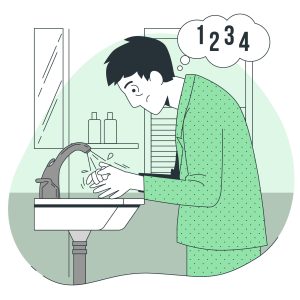
The Hidden Causes Of Eating Disorders: It’s Not What You Think
The world often sees eating disorders as just a food and weight issue. But for you, the one struggling, it’s likely way more complex. When

The world often sees eating disorders as just a food and weight issue. But for you, the one struggling, it’s likely way more complex. When

What is Agoraphobia? Agoraphobia comprises two words of Greek origin. “Agora” means “open or public space” and “phobos” means fear. Thus, agoraphobia is a type

A panic attack can be a scary and confusing experience to go through. During a panic attack, you can feel like your heart is beating

OCD is a deeply misunderstood disorder. Often, we see people around us referring to someone as being “extremely OCD,” when they are talking about someone

Anxiety is a common emotion that many of us are familiar with. We may all experience it on certain occasions that may be stressful. This

Our last post talked about the difference between fear and a phobia, and what it feels like to have a phobia. Once one knows the implications

Most of us use the ‘word’ phobia rather casually. We often hear such exclamations as, “I really hate Maths… I think I have a phobia

At times, we feel stuck in an endless, predictable cycle of feelings, behaviour patterns and situations. It seems as if we are continuously struggling, but still going farther away from what we truly want. In this article, our team of psychologists give their inputs on how it is likely that we might be struggling with a conflict that is more internal, than external – involving a wish, a fear and a defense.

Those who have social anxiety fear social situations. This fear could be felt in all social situations or it could be about a specific kind of social situation: public speaking, going to parties, attending meetings, talking to classmates or colleagues, making phone calls, eating in public, buying something from a store, etc. The anxiety experienced in these social situations is strongly connected to the fear of being judged negatively by others.

It is World Mental Health Day!
There wouldn’t have been a better time to talk about one of the most common afflictions as far as mental health is concerned, something that almost all of us face – ‘Anxiety’.
Be it seeing after your children or making it on time to work, several situations give us the “on the edge” feeling.
When we talk of dealing with or managing anxiety, we think about it the mental way. We try to take things easy, we try to consciously ask ourselves to ‘calm down’ and stay focused.
However, what we tend to ignore is that –
Anxiety is as much in the body as it is in the mind

We specialize in combining psychotherapy with deep wellness practices like mindfulness and meditation and creating a customized mental health plan for individuals and organisations.
We specialize in combining psychotherapy with deep wellness practices like mindfulness and meditation and creating a customized mental health plan for individuals and organisations.

A young woman from another country moved with her family to live for one year in a town near the monastery. When, in the course of the year she discovered the monastery, she would periodically visit to have discussions with the Abbess. The Abbess introduced her to meditation, which became very meaningful for the young woman.
When the family’s year-long stay was drawing to an end, the young woman asked the Abbess, “In my country there is no Buddhism and no one has even heard about meditation. How can I continue to learn and deepen the practice you have started me on?”
The Abbess said, “When you return home ask far and wide for who, among the wise people, is recognized as having the greatest ability to listen. Ask that person to instruct you in the art of listening. What you learn about listening from such a person will teach you how to further your meditation practice.
― Gil Fronsdal, A Monastery Within: Tales from the Buddhist Path